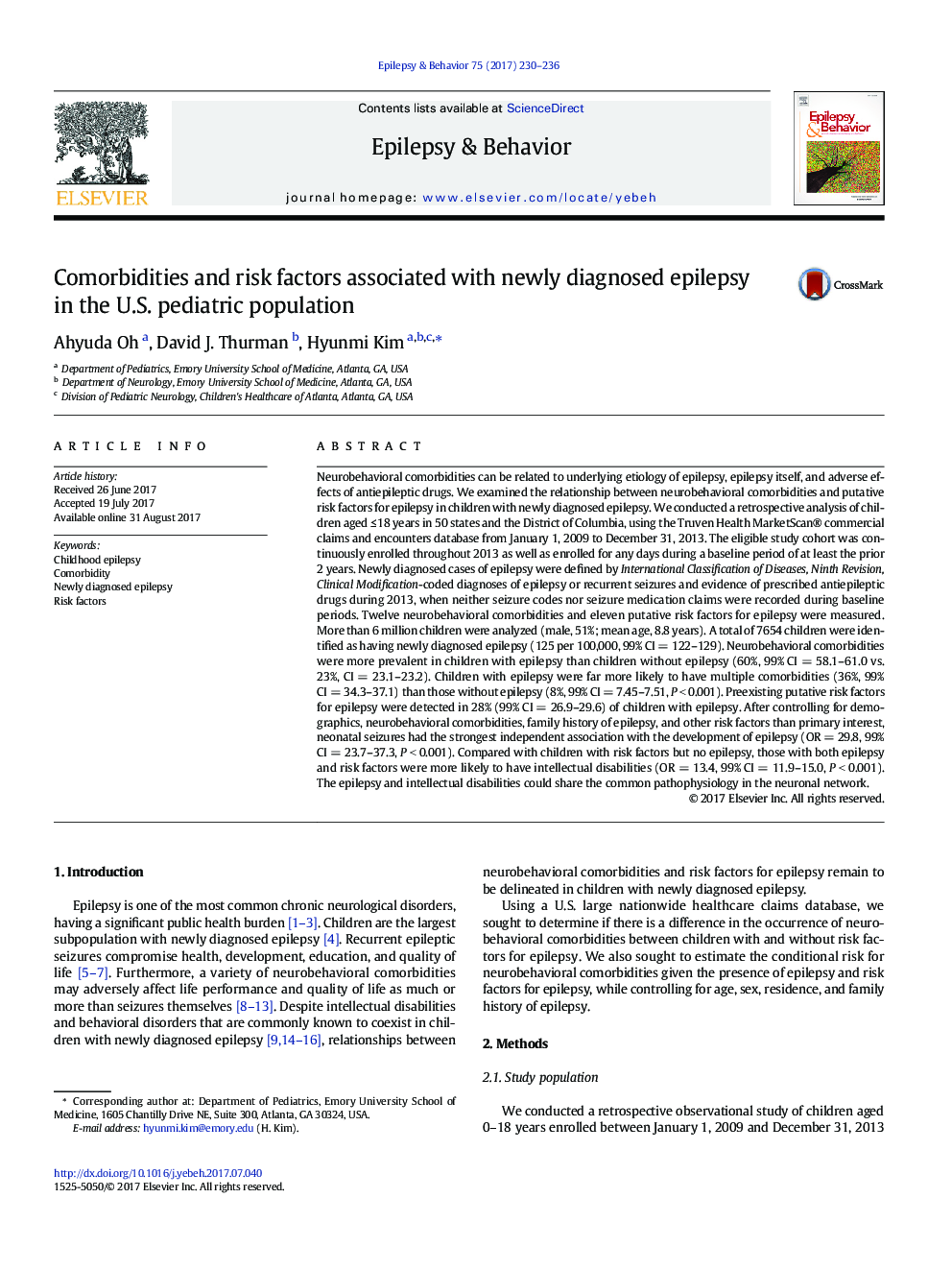| Article ID | Journal | Published Year | Pages | File Type |
|---|---|---|---|---|
| 5628167 | Epilepsy & Behavior | 2017 | 7 Pages |
â¢A retrospective analysis using a large nationwide claims database.â¢Neurobehavioral comorbidities were more prevalent in children with epilepsy compared to children without epilepsy.â¢Children with epilepsy were far more likely to have multiple comorbidities compared to those without epilepsy.â¢Neonatal seizures had the strongest independent association with the development of epilepsy.â¢Children with both epilepsy and risk factors were more likely to have intellectual disabilities.
Neurobehavioral comorbidities can be related to underlying etiology of epilepsy, epilepsy itself, and adverse effects of antiepileptic drugs. We examined the relationship between neurobehavioral comorbidities and putative risk factors for epilepsy in children with newly diagnosed epilepsy. We conducted a retrospective analysis of children aged â¤Â 18 years in 50 states and the District of Columbia, using the Truven Health MarketScan® commercial claims and encounters database from January 1, 2009 to December 31, 2013. The eligible study cohort was continuously enrolled throughout 2013 as well as enrolled for any days during a baseline period of at least the prior 2 years. Newly diagnosed cases of epilepsy were defined by International Classification of Diseases, Ninth Revision, Clinical Modification-coded diagnoses of epilepsy or recurrent seizures and evidence of prescribed antiepileptic drugs during 2013, when neither seizure codes nor seizure medication claims were recorded during baseline periods. Twelve neurobehavioral comorbidities and eleven putative risk factors for epilepsy were measured. More than 6 million children were analyzed (male, 51%; mean age, 8.8 years). A total of 7654 children were identified as having newly diagnosed epilepsy (125 per 100,000, 99% CI = 122-129). Neurobehavioral comorbidities were more prevalent in children with epilepsy than children without epilepsy (60%, 99% CI = 58.1-61.0 vs. 23%, CI = 23.1-23.2). Children with epilepsy were far more likely to have multiple comorbidities (36%, 99% CI = 34.3-37.1) than those without epilepsy (8%, 99% CI = 7.45-7.51, P < 0.001). Preexisting putative risk factors for epilepsy were detected in 28% (99% CI = 26.9-29.6) of children with epilepsy. After controlling for demographics, neurobehavioral comorbidities, family history of epilepsy, and other risk factors than primary interest, neonatal seizures had the strongest independent association with the development of epilepsy (OR = 29.8, 99% CI = 23.7-37.3, P < 0.001). Compared with children with risk factors but no epilepsy, those with both epilepsy and risk factors were more likely to have intellectual disabilities (OR = 13.4, 99% CI = 11.9-15.0, P < 0.001). The epilepsy and intellectual disabilities could share the common pathophysiology in the neuronal network.
